Earth’s Edge is about believing the unbelievable. Thinking in a way that has not been thought of before. Earth’s Edge is a place you have yet to go.
Choose your own modalities and your ideal treatment team based on a schedule that works for you. Learn to create a long term support system so you can get back to living life.
Click on the “+” to read more about each of our modalities.
“Internal Family Systems is a powerfully transformative, evidence-based model of psychotherapy. We believe the mind is naturally multiple and that is a good thing. Our inner parts contain valuable qualities and our core Self knows how to heal, allowing us to become integrated and whole. In IFS all parts are welcome.” Source
“The SE™ approach releases traumatic shock, which is key to transforming PTSD and the wounds of emotional and early developmental attachment trauma.” Source
“Psychodrama is a holistic, strengths‐based method of psychotherapy in which people are helped to enact and explore situations from their own life ‐ past, present and future. The scenes enacted may be based on specific events in a person’s life, their current or past relationships, unresolved situations, desired roles or inner thoughts and conflicts. The method is typically used in group settings, with group members taking on the various roles in the drama as needed. Witnessing and participating in each others’ personal stories can generate feelings of deep understanding and trust amongst group members.” Source
“Bioenergetics rests on the simple proposition that each person is his body. No person exists apart from the living body in which he has existence and through which he expresses himself and relates to the world around him. If you are your body and your body is you then it expresses who you are. It is your way of being in the world. The more alive your body is, the more you are in the world.” – A. Lowen” Source
“Jungian therapy, sometimes known as Jungian analysis, is an in-depth, analytical form of talk therapy designed to bring together the conscious and unconscious parts of the mind to help a person feel balanced and whole. Jungian therapy calls for clients to delve into the deeper and often darker elements of their mind and look at the “real” self rather than the self they present to the outside world.” Source
“a psychotherapy treatment that was originally designed to alleviate the distress associated with traumatic memories (Shapiro, 1989a, 1989b). Shapiro’s (2001) Adaptive Information Processing model posits that EMDR therapy facilitates the accessing and processing of traumatic memories and other adverse life experience to bring these to an adaptive resolution. After successful treatment with EMDR therapy, affective distress is relieved, negative beliefs are reformulated, and physiological arousal is reduced.” Source
“Health at Every Size (HAES) is a movement working to promote size-acceptance, to end weight discrimination, and to lesson the cultural obsession with weight loss and thinness. The HAES approach promotes balanced eating, life-enhancing physical activity, and respect for the diversity of body shapes and sizes… The framing for a HAES approach comes out of discussions among healthcare workers, consumers, and activists who reject both the use of weight, size, or BMI as proxies for health, and the myth that weight is a choice.” – quote from ASDAH – Source
Plate-by-Plate approach is a Family-based Treatment (FBT) guide to nourishing a child with an eating disorder. It is a method and a book by dietitians Wendy Sterling and Casey Crosbie to “help parents navigate the high-calorie demands of malnutrition and weight gain, while helping them reacquaint their child with foods they used to love… No measuring or counting is involved. We find this approach is helpful at a time when kids are facing the challenge of reducing their obsessiveness with numbers and their rigidity, while working on becoming more flexible with food. In time, this approach eventually provides for a seamless transition back to normal eating.” – Source
Sports Nutrition – a subset of nutrition counseling that focuses on nourishing the body for optimal performance in sports, fitness activities, and any way that you like to move your body. Contrary to common belief, sports nutrition does not have to involve obsessive measuring or counting macros or calories. Proper fueling and nutrient timing for athletic activities can absolutely be practiced using an Intuitive Eating and Health at Every Size approach!
The practice of looking at nutrition through a psycho-physiological lense helps revolutionize the way we think about food and health. The mind body approach to nutrition states that changing one’s attitude towards food and nourishment is the foundational step to cultivating a healthy body. Despite what mainstream dietary dogma would have you believe, health is more than the food on one’s plate rather its an accumulation of the thoughts, feelings, and beliefs we have about food that affect the state of our wellbeing. Together we will work on lowering stress and anxiety throughout meals, utilizing the power of pleasure to enhance the nutritional value of one’s food, cultivating a state of relaxation around food and so much more. This work will help you step into the appropriate nervous system state to better digest and assimilate food.
Dynamic Eating Psychology Technique is a positive and empowering approach designed for ANYONE who eats. It includes tools, techniques, maps, skills and protocols that are results driven and sustainable. It recognizes that our eating challenges are intimately connected to ALL of what makes us human – relationship, family, work, money, sexuality, spirituality, our search for fulfillment, and much more. And it sees our concerns with food NOT as an indication that we’re broken, but as a powerful opportunity to grow and evolve. Dynamic Eating Psychology affirms that our relationship with food has important lessons to teach us if we choose to listen. And it recognizes that our challenges with eating, weight and health are intimately connected to other primary life dimensions – relationship, family, work, sexuality, our search for meaning and fulfillment, and so much more. Source


